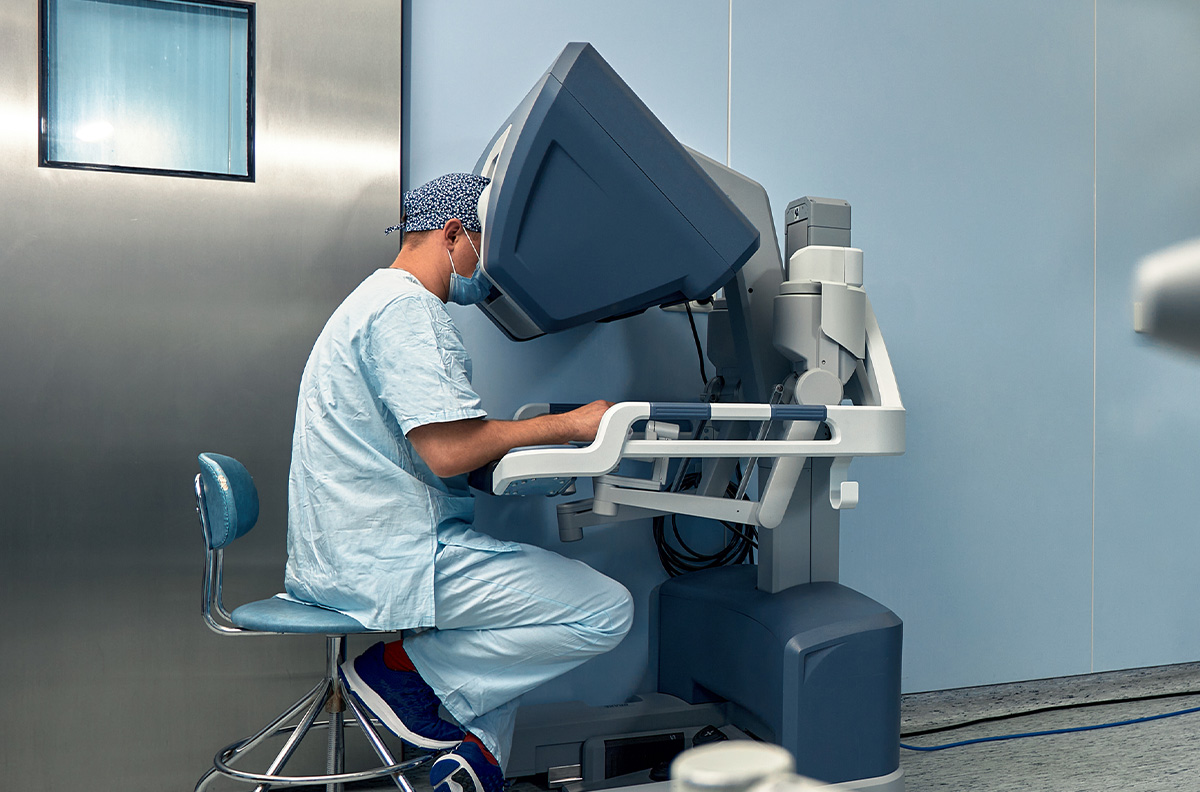Laparoscopic BariClip
Laparoscopic BariClip allows you to lose weight with a reversible method. Since this method does not involve surgical intervention, you can quickly return to your daily life.
Contents
Overview of Laparoscopic BariClip
Laparoscopic BariClip is among the innovative procedures used in the treatment of obesity, a condition that is widespread among both adults and children worldwide and, if left untreated, can lead to various health issues, primarily cardiovascular problems. Obesity not only reduces the quality of life but also negatively impacts overall health. While there are many surgical applications to reverse this condition, individuals who are at risk of surgery may need to resort to different techniques. Laparoscopic BariClip, a minimally invasive approach, stands out due to its advantages such as not requiring incisions and providing rapid recovery.
Laparoscopic BariClip, which positively impacts an individual’s life expectancy, may be the best surgical option for you as well. However, before deciding on the operation, you should gain detailed information about the procedure and always consider expert medical opinions.
What is Laparoscopic BariClip?
Laparoscopic BariClip is a procedure that offers an alternative to traditional obesity surgeries. In this minimally invasive procedure, a clip-like titanium-coated device is placed around the stomach wall. This device aims to achieve an effect similar to that of a gastric sleeve surgery but does not require removing any part of the stomach. The clip placed on the stomach divides the stomach vertically, helping to reduce its volume and make the person feel full more quickly. With the BariClip method, the integrity of the gastrointestinal system is preserved, and food consumption is restricted without creating a shortcut.
As a result of the procedure, both the stomach volume is reduced, leading to less desire to eat, and nutrient absorption decreases. This makes the BariClip a practical and useful method, and it is also a laparoscopic application that does not require an open incision. Therefore, the risk of complications during the surgery is quite low, and the person can return to daily life seamlessly after a very rapid recovery period. However, factors such as continuing old habits, unhealthy living conditions, and diet can affect the success of an operation that would normally be expected to be successful. Therefore, it is recommended to consult your doctor about suitability for surgery and the steps to be taken afterward.
Who is Laparoscopic BariClip Recommended For?
The success rate of the laparoscopic BariClip procedure, which aims to help individuals lose excess weight and improve overall body health, is largely related to the person’s health status. Therefore, it is generally applied to individuals with obesity who cannot lose weight through diet or exercise. However, these are not the only conditions for suitability for the operation, and additional factors that may need to be checked include:
- Investigating the underlying cause of obesity
- History of diet, exercise, and previous operations
- General health condition
- Willingness to adopt healthy lifestyle habits post-operation
- Psychological condition
Following laparoscopic BariClip surgery, it is expected that the reduced stomach size will decrease the need to eat, leading to rapid weight loss. However, the response to treatment is influenced by various factors, primarily genetic factors and eating habits.
How is Laparoscopic BariClip Performed?
Laparoscopic BariClip, one of the most reliable methods in obesity treatment, is performed under general anesthesia and is a closed procedure. This means that there is no need to make large incisions in the body during the application. The steps of the laparoscopic BariClip surgery for a patient under anesthesia typically proceed as follows:
- An endoscope is inserted through the patient’s mouth and advanced to the stomach.
- The internal view of the body is projected onto the operating room screen using robotic surgical equipment with a camera, allowing the doctor to start working on the stomach.
- The titanium-coated clip is placed inside the stomach as needed, thus reducing the size of the stomach.
- The laparoscopic BariClip procedure is completed by removing the endoscope and robotic equipment from the body.
This practical application generally takes between 30 to 60 minutes, but the patient must first recover before being moved out of the operating room. The patient’s nutrition and clip functions are monitored for a few days. If there are no issues, the patient is discharged with general diet and care recommendations.
How Much Weight Can Be Lost with Laparoscopic BariClip?
Individuals who undergo laparoscopic BariClip surgery due to obesity are expected to experience significant physical changes after the procedure. The first effect of the operation comes from the reduction in stomach size. Additionally, following the balanced nutritional plan recommended by the doctor can help increase the rate of weight loss. Generally, individuals who undergo laparoscopic BariClip are expected to lose an average of 30-35% of their weight initially. The subsequent process depends on the individual’s continued dietary and lifestyle habits. Therefore, the weight loss procedure varies for everyone and depends on the response to treatment, initial weight, and adherence to healthy lifestyle habits.
Is Laparoscopic BariClip Surgery Safe?
Laparoscopic BariClip, commonly used in obesity treatment, is generally considered a safe procedure. However, as with any intervention requiring anesthesia, there are potential complications with laparoscopic BariClip. These may include:
- Internal stomach bleeding
- Infection
- Clip malfunction
- Stomach pain
Nonetheless, laparoscopic BariClip is a much safer method compared to many other open surgeries for obesity treatment. Choosing a careful and experienced specialist, evaluating suitability for surgery alongside other alternative methods, and taking preventive measures can minimize risks in this safe procedure.
What are the Advantages of Laparoscopic BariClip?
Laparoscopic BariClip is an easy and practical application that does not require incisions. Primarily aiming to reduce stomach size and control hunger, laparoscopic BariClip has several advantages that distinguish it from other methods:
- The procedure does not involve removing or cutting a large part of the stomach. All procedures are completed minimally invasively.
- Unlike other bariatric procedures, laparoscopic BariClip does not require re-routing the small intestine or anatomically altering the gastrointestinal system.
- It is reversible, unlike sleeve gastrectomy and bypass surgeries, so the clip can be removed if desired, and the stomach can return to its original state.
- The clip placed inside the stomach can help reduce internal stomach pressure. This is expected to contribute significantly to reducing food intake by increasing the feeling of fullness.
- Usually, symptoms of complaints such as reflux tend to ease after laparoscopic BariClip. This helps improve overall living standards.
- There is no risk of leakage, which is one of the most critical situations in stomach surgery.
Due to all these features, laparoscopic BariClip is a low-risk and weight-loss-friendly application. However, since there are various factors that affect the success of the operation, it is essential to decide on the most suitable method with your specialist doctor. If you want to get rid of weight problems related to obesity, you can immediately create an appointment to get detailed information about gastric surgery methods.







